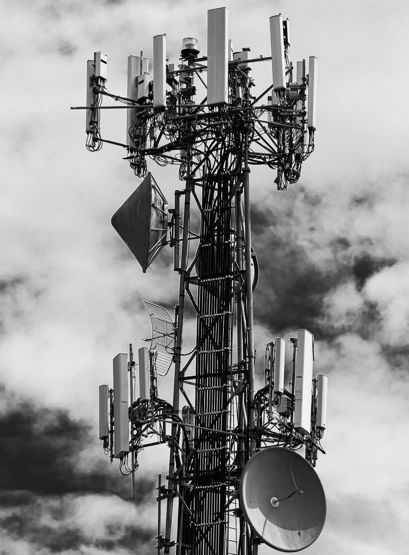“There's a silly notion that failure's not an option at NASA. Failure is an option here. If things are not failing, you are not innovating enough.” – Elon Musk.
The road towards success is full of disappointment. The more ambitious the goal, the more obstacles come in front of it. Overcoming these obstacles means that you have to try and fail, then do it all over again, until you finally reach your goal. Most of the time, these unsuccessful tries are left behind the curtains, unseen:
“Timing, perseverance, and ten years of trying makes you look like an overnight success.” – Founder of Twitter, Biz Stone.
These ‘ten years of trying’ is full of mistakes and struggles because of which many simply give up way too soon. History is written by those who, instead of ‘mistake’, have the word ‘lesson’ in their dictionary.
Amazon’s delivery service lost 800 million dollars in three years

Webvan, Amazon’s child company, was one of the first grocery delivery services. It was created in 1999, and in 2001 it got shut down with a loss of around 800 million dollars.
The people who worked on the project did not forget the idea, though, and today they’re in charge of AmazonFresh, which has already reached cities outside of America, such as Berlin, Tokyo, London, etc.
At first glance, Webvan had everything we believe is the recipe of success: financial resources, experienced entrepreneurs, contacts. Today the company is known as an example that such a recipe doesn’t exist. Everybody makes mistakes.
The company expanded way faster than they were able to manage. Apart from that, the states they chose to expand to didn’t have enough client base to cover operational costs. The technical side of the project couldn’t follow its evolvement, and it died out with a significant loss.
The Lesson: Expand slowly and mindfully
Having enough employees and customers comes before a robust operating system. A significant financial resource doesn’t mean that you have to spend it all instantly. Objectively weight your capabilities as a company.
The founder of Twitter against Apple
Evan Williams is an American entrepreneur. The first blog platform ever, called The Blogger, belongs to him.
After a couple of successful endeavors, Evan joined a company called Odeos that was supposed to become one of the first podcast platforms. Even though he had invested a lot of money in the company, the team decided to leave it at once when they heard that Apple iTunes was soon launching a podcasts section.
Evan knew that he wouldn’t beat a big competitor like Apple, so instead, he started working on what came to be known as Twitter. Today the company’s market value is around 30 Billion dollars.
The lesson: Know your competition
Having a competitor on the market doesn’t mean that your project is going to be unsuccessful. But, it also doesn’t mean that you have to ignore their capabilities completely. To put it simply, if you decide to replace Amazon today, your chances for success will be pretty improbable (but a Georgian version of Amazon would still work because the location and market are different).
Slack and Flickr are the results of unsuccessful videogames

Stewart Butterfield is one of those designers who, despite no technological background, made it through Silicon Valley. We all know about Slack and Flickr, but did you know that Butterfield’s initial idea was an online videogame that nobody played? Game Neverending was an innovative concept in that it enabled players to share different tools. Unfortunately, in 2004 not that many people were playing internet games.
Instead of spending time and resources on his project, Butterfield tried to understand the market needs better. After making some changes in the system, Game Neverending turned into Flickr, a photo-sharing service. Back then, we didn’t have iPhones nor Instagram, so the project was wildly successful.
But, Butterfield didn’t give up on his dream just yet.
After selling Flickr to Yahoo for around 35 Million dollars (in just a year!), Stewart started another project called Glitch. This had to be a multiplayer game, and at first, it successfully acquired 17 million dollars in funding.
10 Million was already gone when Stewart realized that his project would never be successful enough to cover the expenses. So, he stopped the project and, considering previous experience, used the remaining funds for something completely different. He and his team decided to work on the communication system they were using inside the Glitch company. Today, Slack is the number one platform for work-related communications.
The lesson: The project might change in ways you can’t even imagine
Making essential changes in a startup is known as a pivot. A pivot is often crucial for the project’s success, but many are still afraid of it. Stewart managed to overcome his ambitions and desires twice. Based on his example, we can see how important it is to catch the pulse of the market and make changes accordingly.
Initial Linkedin was combining business and romantic relationships

Raid Hoffman’s project before Linkedin was called SocialNet. It had a pretty ambitious goal too: Raid wanted to combine Tinder with Linkedin. Of course, back then, neither existed, but the first-mover advantage didn’t turn out to be enough for success. Users couldn’t quite understand what they should’ve used the platform for. Finally, Raid left the project but didn’t give up on the idea. Soon Linkedin appeared on the market and became known as a platform strictly for business relationships.
The lesson: Focus on one niche
Creating an online space for people to find romantic and business platforms are unquestionably good ideas – but not together. Raid’s mistake was that he wanted to combine everything. As a result, the project failed until he finally went for a compromise.
We wouldn’t have Tesla, SpaceX, and SolarCity if Musk didn’t have risked

Elon Musk received 180 Million dollars from selling PayPal. He invested 100 Million in SpaceX, 70 in Tesla, and 10 in – SolarCity. As he notes, he had to borrow money for rent. Even more interesting is that in one of his interviews, he says that he gave all three companies a 10% chance for survival.
Previous examples showed us that sometimes, ditching an idea is necessary to stumble upon a successful one. But, we also saw that what might count as a mistake sometimes isn’t a mistake at all. Elon Musk’s decision is a proof of this.
As he also notes, if you want to have a significant impact, the risk for failure will be proportional. There are moments in life where you simply have to trust your guts.
The lesson: Trust yourself and never give up
Musk may have doubted his projects, but he didn’t question his beliefs. To overcome the complex and often illogical road towards success, you have to know your abilities.
What all of these stories have in common is that successful people tell them. Despite their enormous mistakes, none of them saw giving up as an option. We’ll probably never hear a story about that because nobody listens to those who give up.
“A winner is just a loser who tried one more time.” – George M. Moore, Jr.



From failures to unicorn startups
27 August 2020“There's a silly notion that failure's not an option at NASA. Failure is an option here. If things are not failing, you are not innovating enough.” – Elon Musk.
The road towards success is full of disappointment. The more ambitious the goal, the more obstacles come in front of it. Overcoming these obstacles means that you have to try and fail, then do it all over again, until you finally reach your goal. Most of the time, these unsuccessful tries are left behind the curtains, unseen:
“Timing, perseverance, and ten years of trying makes you look like an overnight success.” – Founder of Twitter, Biz Stone.
These ‘ten years of trying’ is full of mistakes and struggles because of which many simply give up way too soon. History is written by those who, instead of ‘mistake’, have the word ‘lesson’ in their dictionary.
Amazon’s delivery service lost 800 million dollars in three years
Webvan, Amazon’s child company, was one of the first grocery delivery services. It was created in 1999, and in 2001 it got shut down with a loss of around 800 million dollars.
The people who worked on the project did not forget the idea, though, and today they’re in charge of AmazonFresh, which has already reached cities outside of America, such as Berlin, Tokyo, London, etc.
At first glance, Webvan had everything we believe is the recipe of success: financial resources, experienced entrepreneurs, contacts. Today the company is known as an example that such a recipe doesn’t exist. Everybody makes mistakes.
The company expanded way faster than they were able to manage. Apart from that, the states they chose to expand to didn’t have enough client base to cover operational costs. The technical side of the project couldn’t follow its evolvement, and it died out with a significant loss.
The Lesson: Expand slowly and mindfully
Having enough employees and customers comes before a robust operating system. A significant financial resource doesn’t mean that you have to spend it all instantly. Objectively weight your capabilities as a company.
The founder of Twitter against Apple
Evan Williams is an American entrepreneur. The first blog platform ever, called The Blogger, belongs to him.
After a couple of successful endeavors, Evan joined a company called Odeos that was supposed to become one of the first podcast platforms. Even though he had invested a lot of money in the company, the team decided to leave it at once when they heard that Apple iTunes was soon launching a podcasts section.
Evan knew that he wouldn’t beat a big competitor like Apple, so instead, he started working on what came to be known as Twitter. Today the company’s market value is around 30 Billion dollars.
The lesson: Know your competition
Having a competitor on the market doesn’t mean that your project is going to be unsuccessful. But, it also doesn’t mean that you have to ignore their capabilities completely. To put it simply, if you decide to replace Amazon today, your chances for success will be pretty improbable (but a Georgian version of Amazon would still work because the location and market are different).
Slack and Flickr are the results of unsuccessful videogames
Stewart Butterfield is one of those designers who, despite no technological background, made it through Silicon Valley. We all know about Slack and Flickr, but did you know that Butterfield’s initial idea was an online videogame that nobody played? Game Neverending was an innovative concept in that it enabled players to share different tools. Unfortunately, in 2004 not that many people were playing internet games.
Instead of spending time and resources on his project, Butterfield tried to understand the market needs better. After making some changes in the system, Game Neverending turned into Flickr, a photo-sharing service. Back then, we didn’t have iPhones nor Instagram, so the project was wildly successful.
But, Butterfield didn’t give up on his dream just yet.
After selling Flickr to Yahoo for around 35 Million dollars (in just a year!), Stewart started another project called Glitch. This had to be a multiplayer game, and at first, it successfully acquired 17 million dollars in funding.
10 Million was already gone when Stewart realized that his project would never be successful enough to cover the expenses. So, he stopped the project and, considering previous experience, used the remaining funds for something completely different. He and his team decided to work on the communication system they were using inside the Glitch company. Today, Slack is the number one platform for work-related communications.
The lesson: The project might change in ways you can’t even imagine
Making essential changes in a startup is known as a pivot. A pivot is often crucial for the project’s success, but many are still afraid of it. Stewart managed to overcome his ambitions and desires twice. Based on his example, we can see how important it is to catch the pulse of the market and make changes accordingly.
Initial Linkedin was combining business and romantic relationships
Raid Hoffman’s project before Linkedin was called SocialNet. It had a pretty ambitious goal too: Raid wanted to combine Tinder with Linkedin. Of course, back then, neither existed, but the first-mover advantage didn’t turn out to be enough for success. Users couldn’t quite understand what they should’ve used the platform for. Finally, Raid left the project but didn’t give up on the idea. Soon Linkedin appeared on the market and became known as a platform strictly for business relationships.
The lesson: Focus on one niche
Creating an online space for people to find romantic and business platforms are unquestionably good ideas – but not together. Raid’s mistake was that he wanted to combine everything. As a result, the project failed until he finally went for a compromise.
We wouldn’t have Tesla, SpaceX, and SolarCity if Musk didn’t have risked
Elon Musk received 180 Million dollars from selling PayPal. He invested 100 Million in SpaceX, 70 in Tesla, and 10 in – SolarCity. As he notes, he had to borrow money for rent. Even more interesting is that in one of his interviews, he says that he gave all three companies a 10% chance for survival.
Previous examples showed us that sometimes, ditching an idea is necessary to stumble upon a successful one. But, we also saw that what might count as a mistake sometimes isn’t a mistake at all. Elon Musk’s decision is a proof of this.
As he also notes, if you want to have a significant impact, the risk for failure will be proportional. There are moments in life where you simply have to trust your guts.
The lesson: Trust yourself and never give up
Musk may have doubted his projects, but he didn’t question his beliefs. To overcome the complex and often illogical road towards success, you have to know your abilities.
What all of these stories have in common is that successful people tell them. Despite their enormous mistakes, none of them saw giving up as an option. We’ll probably never hear a story about that because nobody listens to those who give up.
“A winner is just a loser who tried one more time.” – George M. Moore, Jr.